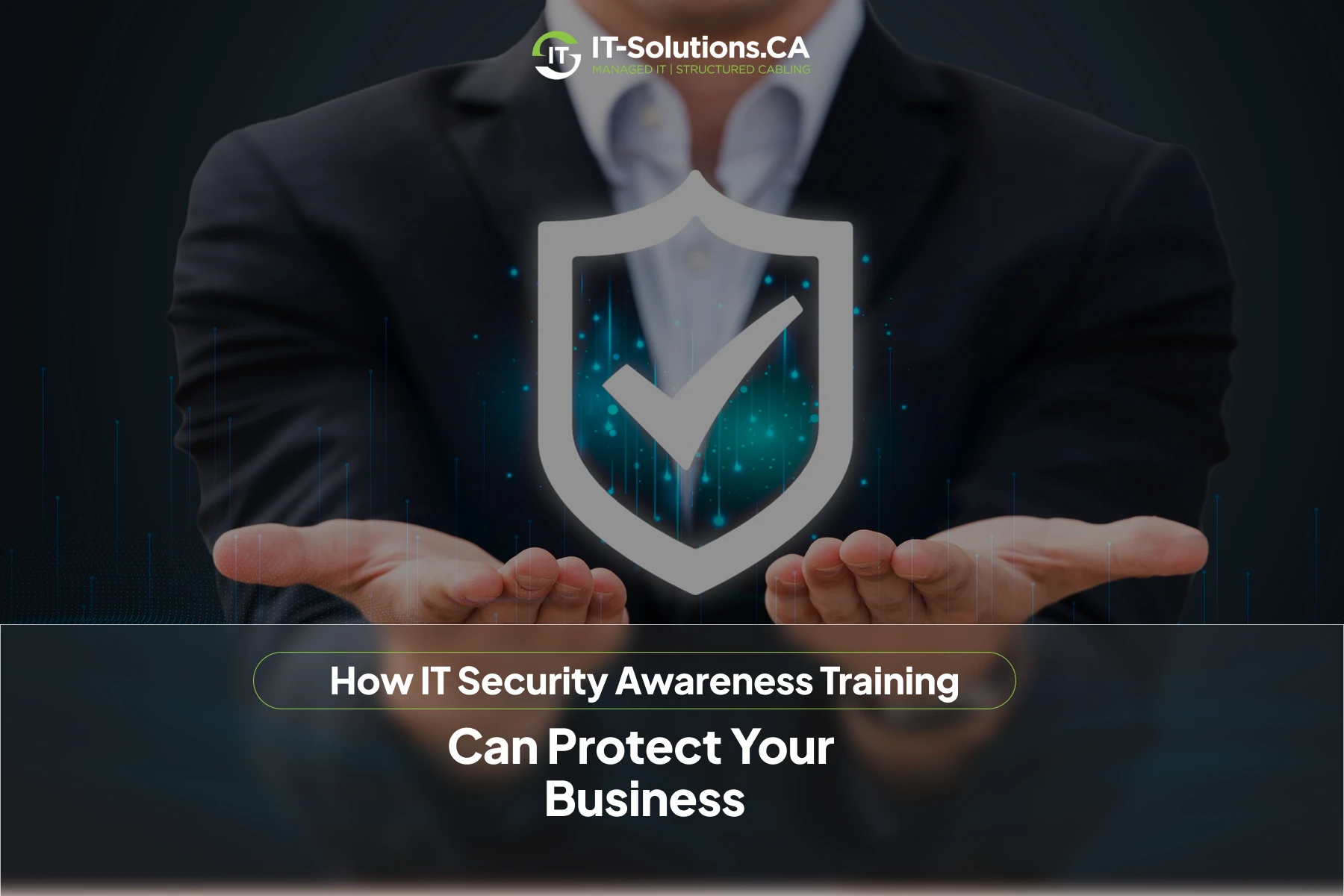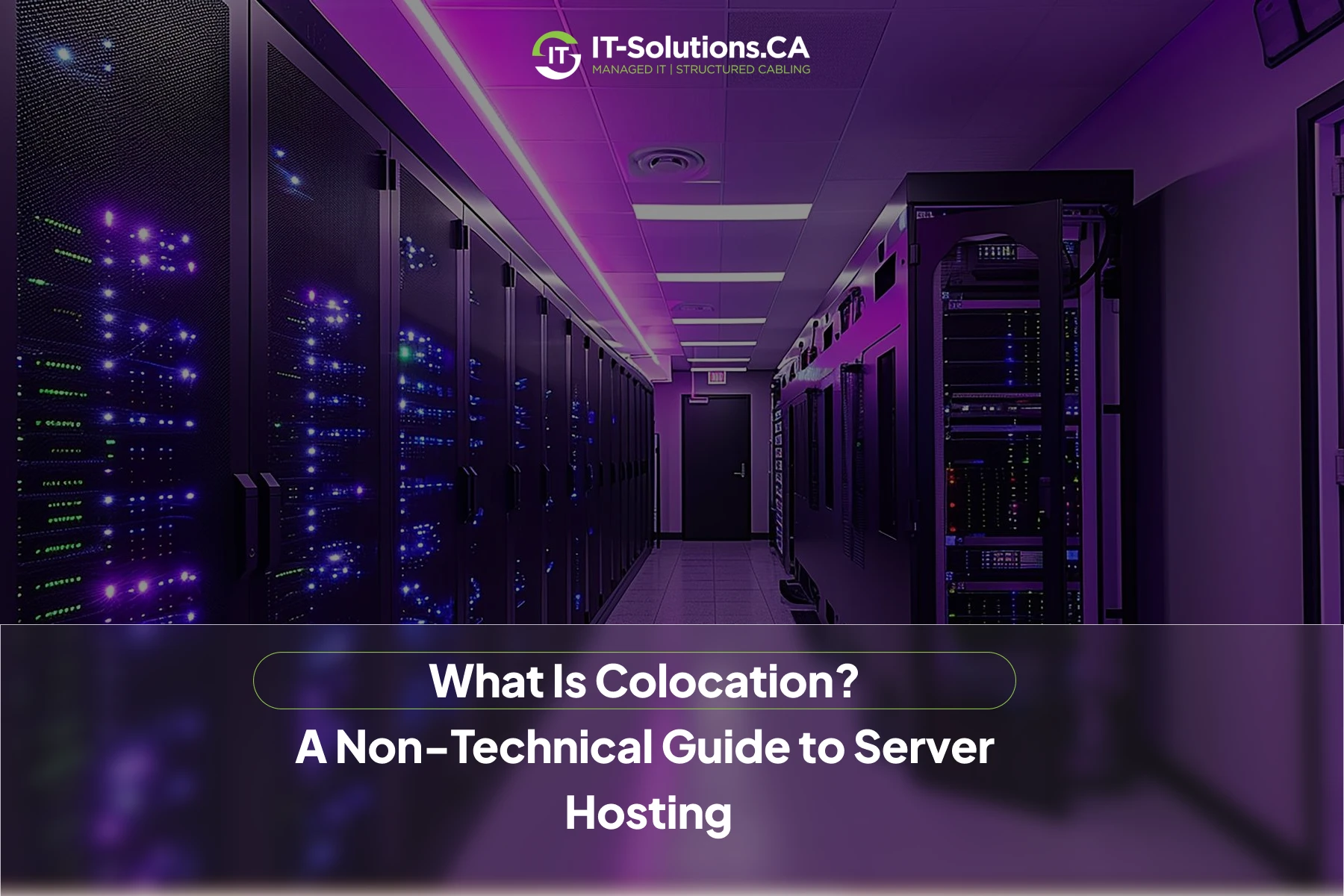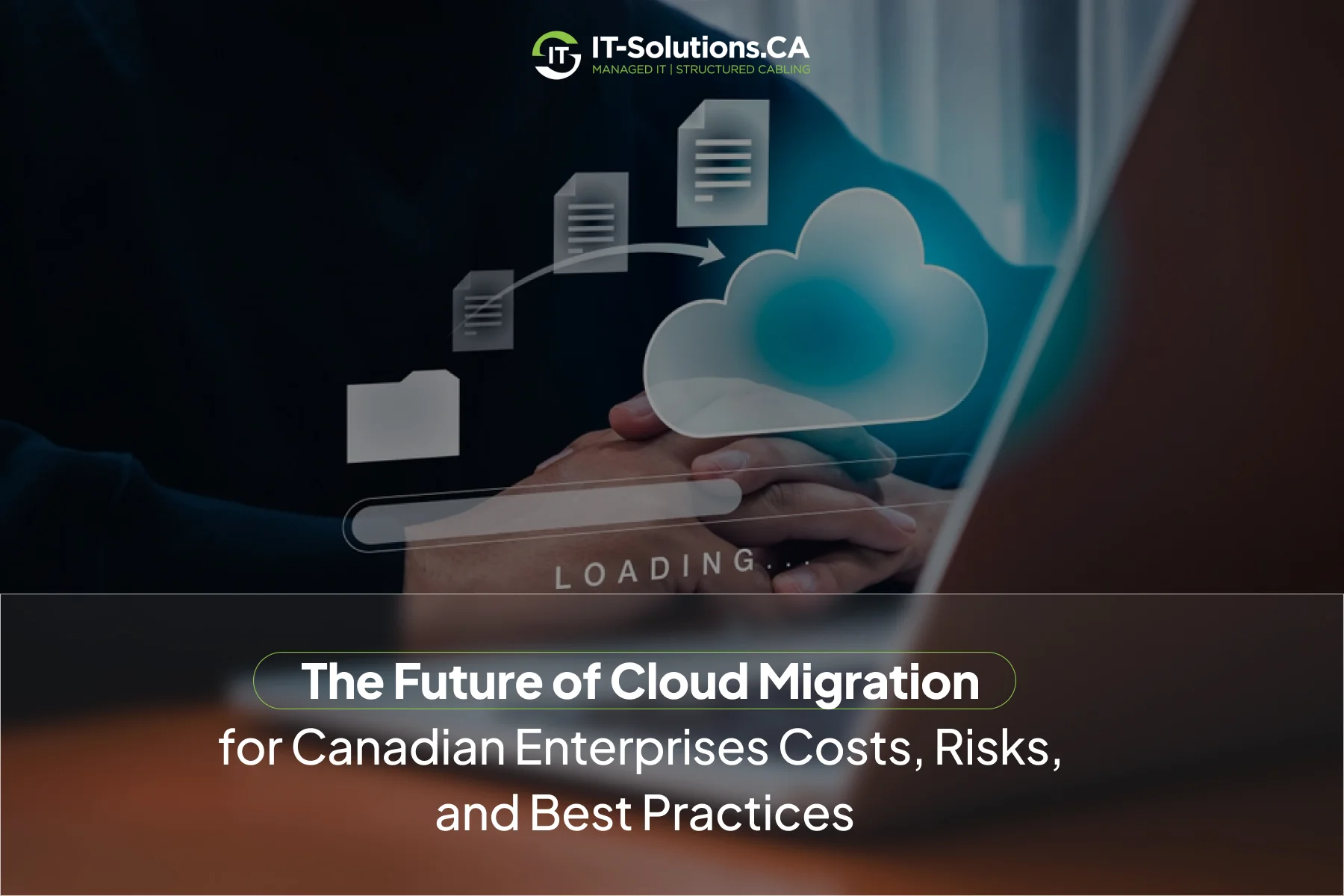This comprehensive guide explores the seven essential cybersecurity solutions that businesses must implement in 2025 to protect against evolving threats and sophisticated cybercriminals.
The 7 Essential Cybersecurity Solutions:
- Managed IT Support with Security Monitoring: 24/7 threat detection and incident response
- Secure Network Cabling Infrastructure: Physical security and network segmentation
- Protected Cloud Hosting Solutions: Enterprise-grade security with automated backups
- Microsoft 365 Security Migrations: Advanced threat protection and compliance tools
- Comprehensive Cybersecurity Assessments: Professional vulnerability scanning and risk evaluation
- Professional IT Security Evaluations: In-depth technical analysis of systems and applications
- Virtual CTO Strategic Security Oversight: Executive-level cybersecurity strategy and risk management
Learn emerging threats, practical implementation strategies, and how to choose the right solutions for your business size and industry requirements.
The cybersecurity landscape has fundamentally shifted in 2025, with ransomware attacks now impacting 6 in 10 businesses annually. Modern cybercriminals operate like Fortune 500 companies, stealing over $6.3 billion through email compromise scams in the past year alone.
Cyber attacks now cost businesses an average of $4.88 million per incident, with 95% of successful attacks resulting from human error. Small businesses face particular vulnerability, with 60% closing permanently within six months of a major cyber attack. Smart business leaders recognize that cybersecurity is a fundamental business survival strategy that requires immediate action.
If you’re concerned about your current security posture, our experts at IT-Solutions.CA can perform a professional assessment that can reveal vulnerabilities before attackers find them.
Why Are Cybersecurity Solutions Important?
Businesses need advanced cybersecurity solutions because cyber attacks increased by 38% in 2024, with average breach costs reaching $4.88 million. New AI-driven threats, ransomware-as-a-service, and quantum computing risks create unprecedented security challenges.
Key cyber attack statistics for 2025:
- Ransomware attacks occur every 11 seconds globally
- 43% of cyber attacks target small businesses specifically
- Data breaches take an average of 287 days to identify and contain
- 95% of successful cyber attacks result from human error
- Cybercrime damages are projected to reach $10.5 trillion annually
Emerging threat vectors businesses face:
- AI-Driven Malware: Cybercriminals now use artificial intelligence to create adaptive malware that evolves to bypass traditional security measures. These threats learn from defense mechanisms and modify their attack patterns in real-time.
- Ransomware-as-a-Service: Criminal organizations offer ransomware tools as subscription services, making sophisticated attacks accessible to less technical criminals. This has dramatically increased the volume and complexity of ransomware incidents.
- Supply Chain Vulnerabilities: Gartner’s prediction that 45% of organizations will face supply chain attacks by 2025 represents a threefold increase from 2021, highlighting how interconnected business systems create new attack vectors.
- Insider Threats: Malicious or compromised employees pose significant risks, with insider threats causing 34% of all data breaches. Remote work has expanded attack surfaces and made monitoring more challenging.
- 5G and Edge Vulnerabilities: New network technologies create additional entry points for attackers. Edge computing devices often lack robust security measures, providing cybercriminals with new attack vectors.
- Regulatory pressures add another layer of complexity: GDPR, CCPA, and industry-specific regulations require businesses to implement specific security measures. Non-compliance results in hefty fines and legal consequences that can devastate operations.
Business continuity depends entirely on cybersecurity resilience. A single successful attack can shut down operations for weeks, destroy customer trust, and result in permanent business closure.
Top 7 Cyber Security Solutions for 2025
The most effective cybersecurity solutions combine proactive monitoring, secure infrastructure, and strategic oversight to create comprehensive protection against modern threats. Here are the seven critical cybersecurity solutions every business needs to implement for complete protection in 2025:
1. Managed IT Support with Security Monitoring
Managed IT support provides 24/7 monitoring, threat detection, and incident response services that identify security threats before they cause damage. Professional IT teams monitor networks continuously and respond to threats within minutes.
Key benefits of managed IT security:
- Real-time threat monitoring and automated response
- Regular security updates and patch management
- Proactive vulnerability assessments and remediation
- Incident response and recovery planning
- Compliance monitoring and reporting
Managed IT support eliminates the need for businesses to maintain expensive in-house security teams while providing enterprise-level protection. Expert technicians use advanced tools to detect anomalies and respond to threats faster than internal teams.
Most businesses lack the expertise and resources to monitor threats continuously. Managed IT support bridges this gap by providing specialized knowledge and round-the-clock vigilance that keeps systems secure.
2. Secure Network Cabling Infrastructure
Secure network cabling infrastructure prevents unauthorized physical access to network systems and ensures data transmission integrity. Properly designed cabling systems include physical security measures that protect against tampering and eavesdropping.
Essential network security features:
- Structured cabling with access control points
- Fiber optic connections for sensitive data transmission
- Physical security for network closets and data centers
- Cable management systems that prevent tampering
- Network segmentation to limit breach impact
Physical network security often gets overlooked, but cybercriminals frequently exploit physical access points to gain system entry. Secure cabling infrastructure creates the foundation for all other cybersecurity measures.
Professional network design includes redundancy and failover systems that maintain connectivity during attacks. This ensures business operations continue even when primary systems face security incidents.
3. Protected Cloud Hosting Solutions
Secure cloud hosting provides enterprise-grade security infrastructure, automated backups, and disaster recovery capabilities that most businesses cannot afford to implement independently. Cloud providers invest billions in security measures that protect against sophisticated threats.
Professional cloud hosting includes multiple security layers:
- Advanced firewalls and intrusion detection systems
- Encrypted data storage and transmission
- Regular security audits and compliance certifications
- Automated backup and disaster recovery systems
- DDoS protection and traffic filtering
Cloud hosting eliminates single points of failure that make traditional on-premise systems vulnerable. Distributed infrastructure means that even successful attacks against one component cannot compromise the entire system.
Many businesses struggle with cloud migration security concerns, but properly configured cloud environments offer superior protection compared to on-premise alternatives. Our professional migration services ensure security best practices during the transition process.
4. Microsoft 365 Security Migrations
Microsoft 365 migrations provide advanced security features, including multi-factor authentication, threat protection, and data loss prevention that significantly enhance business security posture. Modern Office 365 environments include built-in AI-powered threat detection.
Microsoft 365 security advantages:
- Advanced threat protection against phishing and malware
- Multi-factor authentication for all user accounts
- Data loss prevention and encryption capabilities
- Compliance tools for regulatory requirements
- Integrated backup and recovery solutions
Legacy email and productivity systems lack modern security features that protect against current threats. Microsoft 365 provides enterprise-grade security tools that automatically update to address new threat vectors.
Professional migration services ensure proper security configuration during the transition. Many businesses attempt DIY migrations but miss critical security settings that leave systems vulnerable to attack.
5. Comprehensive Cybersecurity Assessments
Cybersecurity assessments evaluate existing security measures, identify vulnerabilities, and provide detailed improvement recommendations. Professional assessments uncover security gaps that businesses typically miss during internal reviews.
Assessment components include:
- Network vulnerability scanning and penetration testing
- Employee security awareness evaluation
- Policy and procedure review
- Compliance gap analysis
- Risk assessment and prioritization
Regular assessments provide objective security evaluations that help businesses understand their actual risk exposure. Internal teams often have blind spots or lack specialized knowledge to identify all potential vulnerabilities.
Assessment reports include prioritized action plans that help businesses address the most critical security gaps first. This strategic approach maximizes security improvements while managing implementation costs effectively.
6. Professional IT Security Evaluations
IT security evaluations provide an in-depth technical analysis of systems, applications, and infrastructure components to identify specific security weaknesses. These evaluations go beyond surface-level assessments to examine code, configurations, and architectural vulnerabilities.
Evaluation focus areas:
- Application security and code review
- Database security and access controls
- Server configuration and hardening
- Network architecture and segmentation
- Security tool effectiveness and optimization
Professional evaluations use specialized tools and techniques that reveal vulnerabilities missed by automated scanning tools. Expert security professionals provide insights that help businesses understand complex security interdependencies.
Evaluation results include technical remediation steps and implementation timelines. This detailed guidance helps businesses address security issues systematically rather than applying random security patches.
7. Virtual CTO Strategic Security Oversight
A virtual Chief Technology Officer provides executive-level strategic guidance for cybersecurity initiatives, technology planning, and risk management. Virtual CTOs bring enterprise-level expertise to businesses that cannot afford full-time executive technology leadership.
Virtual CTO cybersecurity responsibilities:
- Cybersecurity strategy development and implementation
- Technology risk assessment and management
- Security budget planning and resource allocation
- Vendor evaluation and security oversight
- Board-level security reporting and communication
Many businesses lack senior leadership with deep cybersecurity expertise, leading to poor security decisions and inadequate risk management. Virtual CTOs bridge this gap by providing strategic oversight and technical expertise.
Virtual CTO services help businesses align cybersecurity investments with business objectives. This strategic approach ensures security measures support business growth rather than hindering operations.
How to Choose the Right Cyber Security Solutions for Your Business?
Businesses should evaluate their specific risk profile, budget constraints, regulatory requirements, and existing infrastructure when choosing cybersecurity solutions. The right combination depends on industry, company size, and threat exposure level.
Key selection criteria:
- Business size and complexity requirements
- Industry-specific compliance obligations
- Current technology infrastructure and capabilities
- Budget availability for security investments
- Internal IT expertise and resources
Start with a professional security assessment to understand your current security posture and identify priority areas for improvement. This baseline evaluation helps determine which solutions provide the most significant security improvements.
Consider scalability when selecting solutions. Growing businesses need security tools that can expand with their operations without requiring complete replacement. Cloud-based solutions typically offer better scalability than on-premise alternatives.
Implementation best practices:
- Phase implementation to manage costs and complexity
- Provide comprehensive employee training on new security tools
- Establish clear security policies and procedures
- Regular testing and validation of security measures
- Continuous monitoring and improvement processes
Small businesses should prioritize managed services that provide enterprise-level protection without requiring significant internal expertise. Larger organizations may benefit from hybrid approaches that combine internal capabilities with external specialized services.
Budget considerations should focus on the total cost of ownership rather than initial purchase prices. Effective cybersecurity is an investment that prevents much larger costs associated with successful cyber attacks.
Bottom Line
When cyber threats evolve by the hour and a single attack can devastate years of hard work, you need a cybersecurity partner who truly understands what’s at stake. IT-Solutions.CA has spent over a decade helping Canadian businesses stay one step ahead of cybercriminals.
We become part of your team and watch over your digital world 24/7. Every day, our team monitors the latest attack patterns, updates our defenses, and ensures that when cybercriminals come knocking, they find nothing but locked doors and protected assets.
Need to strengthen your cybersecurity defenses? Contact the IT-Solutions Canada team at 1-866-531-2614 to discuss your specific security needs!
FAQs
1. What are the most important cybersecurity solutions for businesses in 2025?
The most critical solutions include managed IT support with monitoring, secure network infrastructure, protected cloud hosting, Microsoft 365 security, comprehensive assessments, IT evaluations, and virtual CTO oversight for strategic guidance.
2. How does AI improve cybersecurity threat detection and response?
AI enhances cybersecurity by analyzing vast amounts of data to identify unusual patterns, automating threat responses, predicting potential attacks, and adapting defenses in real-time to counter evolving threats.
3. How can small businesses implement effective cybersecurity on a budget?
Small businesses should prioritize managed IT services, cloud-based security solutions, employee training programs, and phased implementation approaches that provide maximum protection while managing costs effectively through professional guidance.
4. What role does employee training play in cybersecurity defense?
Employee training is crucial since 95% of successful cyber attacks result from human error. Regular training reduces phishing susceptibility, improves security awareness, and creates a human firewall against social engineering attacks.
Author Profile

- Mark Sousa
- IT-Solutions Canada offers expert managed IT, cloud, and cabling services across Canada. They deliver fast, reliable support to keep businesses connected, secure, and productive.
Latest entries
 BlogsOctober 21, 2025How IT Security Awareness Training Can Protect Your Business?
BlogsOctober 21, 2025How IT Security Awareness Training Can Protect Your Business? BlogsOctober 21, 2025What Is Colocation? A Non-Technical Guide To Server Hosting
BlogsOctober 21, 2025What Is Colocation? A Non-Technical Guide To Server Hosting BlogsSeptember 25, 2025The Future of Cloud Migration for Canadian Enterprises: Costs, Risks, and Best Practices
BlogsSeptember 25, 2025The Future of Cloud Migration for Canadian Enterprises: Costs, Risks, and Best Practices BlogsSeptember 23, 2025AI-Powered Cybersecurity: How Canadian Businesses Can Stay Ahead of Evolving Threats in 2025
BlogsSeptember 23, 2025AI-Powered Cybersecurity: How Canadian Businesses Can Stay Ahead of Evolving Threats in 2025



